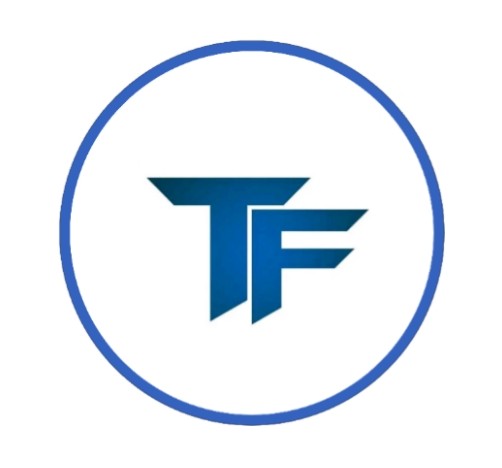Introduction
Welcome! We’re on an exciting adventure exploring cool AI tools that make us more efficient and productive. We’ve already talked about some tools like GPT and Gemini. Now, let’s take a closer look at Dolly and see what this AI tool can do.
What is Dolly?
Dolly, is a ossum project by Databricks, is an innovative large language model designed for instruction-following tasks. Unlike traditional language models, Dolly specializes in understanding and executing instructions provided by users, making it a powerful tool for various applications requiring precise task completion.
History of Dolly:
Dolly 1.0:
- Dolly 1.0 set a new standard for instruction-following LLMs.
- Initially trained on output from ChatGPT by the Stanford Alpaca team via OpenAI API.
- Faced commercial restrictions, limiting widespread use.
Dolly 2.0:
- Databricks introduced Dolly 2.0, the first open-source, commercially viable instruction-following LLM.
- Fine-tuned with a high-quality instruction dataset from 5,000+ Databricks employees.
Versions of Dolly:
Dolly 1.0:
Dolly 1.0 was the initial version, trained at a relatively low cost of $30 using the Stanford Alpaca dataset. However, it had limitations in terms of commercial use due to the terms of service restrictions associated with the dataset.
Dolly 2.0:
Dolly 2.0 is a significant upgrade, addressing the limitations of the previous version:
- Free and Open-Source: Dolly 2.0 is available free of charge for both research and commercial use. It is the first open-source, commercially viable instruction-following large language model offering unrestricted access to its capabilities.
- Customization: Organizations can create, own, and customize their LLMs without external API dependencies. This unlocks endless possibilities for innovation, as companies can fine-tune the model to their specific needs and use cases.
How to use Dolly 2.0:
- Access Dolly 2.0:
Visit the Dolly 2.0 model page on Hugging Face. - Download Model Weights:
Click on the “Download” button to obtain the model weights. - Create Inference Pipeline:
Set up your environment to load the Dolly 2.0 model and configure it for inference. - Query Dolly 2.0:
Input instructions or questions into the inference pipeline and prompt Dolly 2.0 for responses. - Experiment and Explore:
Test Dolly 2.0 across various tasks, such as content generation, information extraction, and summarization. - Customize as Needed:
Modify the model’s behavior and responses according to your specific requirements and use cases. - Utilize Open Source License:
Take advantage of the Creative Commons Attribution-ShareAlike 3.0 Unported License for the dataset, allowing for flexibility in usage and modification.
Enhancing Accessibility with Dolly 2.0 for Visually Impaired Individuals
Dolly 2.0 brings new opportunities for enhancing accessibility and productivity
, particularly for visually impaired individuals. Let’s delve into how Dolly 2.0 can make a difference:
- Instruction-Following Interactivity:
- With its ability to follow instructions, Dolly 2.0 facilitates seamless human-computer interaction.
- Visually impaired users can interact with Dolly 2.0 by providing clear instructions, enabling tasks such as asking questions, requesting information, or generating content.
- Customization and Adaptability:
- Organizations can tailor Dolly 2.0 to meet the specific needs of visually impaired users.
- Dolly 2.0 can assist with tasks such as reading aloud, summarization, navigation, and content generation, enhancing accessibility and independence.
- Dataset and License:
- Quality Data: Dolly 2.0 learns from a dataset called Databricks-dolly-15k. This dataset has 15,000 pairs of human-made questions and answers, ensuring Dolly 2.0 understands well.
- Freedom to Use: The dataset follows the Creative Commons Attribution-ShareAlike 3.0 Unported License. This means anyone can use it for business without any rules holding them back.
In short, Dolly 2.0 helps visually impaired individuals by being easy to talk to and changing to fit their needs. And because it’s open-source, everyone can use it equally and even make changes to make it better.
Tips & Tricks for Dolly 2.0
- Voice Activation: Enable hands-free interaction with Dolly 2.0 using voice commands.
- Custom Instructions: Tailor Dolly 2.0’s responses for visually impaired users’ needs.
- Simplified Interaction: Keep interactions with Dolly 2.0 straightforward and clear.
- Regular Updates: Keep Dolly 2.0 updated for the latest improvements in accessibility and functionality.
Conclusion
Dolly 2.0 from Databricks is an amazing AI tool that revolutionizes instruction-following tasks. From its humble beginnings with Dolly 1.0 to the current version, Dolly 2.0 has evolved into an open-source, customizable solution for various applications.
With Dolly 2.0, users can access advanced language model capabilities for both research and commercial use, breaking free from previous limitations. Its versatility and adaptability make it an invaluable resource, empowering organizations to innovate and tailor the model to their specific needs.
For visually impaired individuals, Dolly 2.0 opens up new possibilities for accessibility and productivity. Its instruction-following interactivity, customization options, and open-source nature ensure equal access and usability for all users.
Dolly 2.0 has been a great AI tool. Want to learn about more cool tools like it? Keep following our blogs to discover more awesome AI tools that are changing the game!
Refference:
- GitHub Repository: You can find the Dolly 2.0 code, dataset, and other related files on the Dolly GitHub repository. Dolly is a large language model trained on the Databricks Machine Learning Platform. It’s based on the EleutherAI pythia model family and fine-tuned exclusively on a new, high-quality human-generated instruction following dataset.
- Dolly 2.0 Model Weights: To download the Dolly 2.0 model weights, visit the Databricks Hugging Face page. The model is available as databricks/dolly-v2-12b.
